The Simpson Strong-Tie® 2019–2020 Wood Construction Connectors catalog is the first in the industry with updated connector allowable load tables to meet the new ASTM test standards required by the 2015 and 2018 International Building Code® (IBC®). It is designed to assist engineers, architects, Designers and contractors in selecting the right products for improved performance, efficiency and productivity. This blog post provides in-depth background about how we re-evaluated our connectors to meet the new standards.
I attended ICC-ES Evaluation Committee meetings last week, where we had the opportunity to provide input on proposed changes in acceptance criteria used to evaluate a variety of building products. Simpson Strong-Tie engineers are active in the development of codes and standards, which allows us to advocate for building safety. It also keeps us up to date on upcoming changes that will affect the building industry.
One change from the 2012 to 2015 International Building Code® (IBC®) was a reference to the joist hanger test standard. The 2015 IBC Section 2303.5 specifies testing and evaluation per ASTM D7147, Standard Specification for Testing and Establishing Loads of Joist Hangers. Previous versions of the IBC required testing to comply with ASTM D1761, Test Methods for Mechanical Fasteners in Wood. Both standards determine a connector’s allowable load as the lowest of the following:
- Lowest ultimate load of three tests (or average of six) with a safety factor of three
- Average load at ⅛” deflection
- Calculations per American Wood Council National Design Specification for Wood Construction (NDS)
The primary changes in ASTM D7147 are requirements for measuring properties of the tested materials, such as steel strength, fastener strength and wood specific gravity. When tested material properties exceed the specified properties, report holders are required to adjust the tested ultimate loads to account for the material over-strength. I discussed some of these reduction factors in a previous blog post covering How We Test Wood Connectors.
Over the last several years, Simpson Strong-Tie has worked to update all of our connector evaluation reports to the 2015 IBC. This required a thorough re-evaluation of original test data to account for material strength reductions and, in many cases, new testing. We are the first manufacturer to update all of our connector evaluation reports — 15 ICC-ES ESRs and three IAPMO-UES ERs.
Although we updated our code reports over the last couple of years, engineers are likely just seeing these load changes now in the new 2019–2020 Wood Construction Connectors catalog, C-C-2019. To help identify significant load changes, we show loads that changed more than 5% in red.
With that overly long introduction out of the way, I’d like to discuss, in general, how these changes affected loads across a handful of product lines.
Concrete Connectors:
This one actually has nothing to do with ASTM D7147. Wind loads changed in the 2012/2015 IBC. In earlier codes, engineers calculated wind loads at Allowable Stress Design (ASD) levels and increased them by 1.6 for Load and Resistance Factor Design (LRFD). Wind loads are determined at LRFD levels in the 2012/2015 IBC, and you factor down by a 0.6 factor for ASD. When we test concrete connectors for light-frame construction, allowable loads are determined by dividing the test load by an alpha factor, which is simply the load factors from the code. Alpha used to be 1.6 for wind, but it has changed to 1/0.6 (or 1.67). The difference is 1.6/1.67 = 0.96, so some wind loads have reduced by up to 4%. Minimum safety factors or fastener calculations govern some loads, so not all loads reduced by the full 4%.
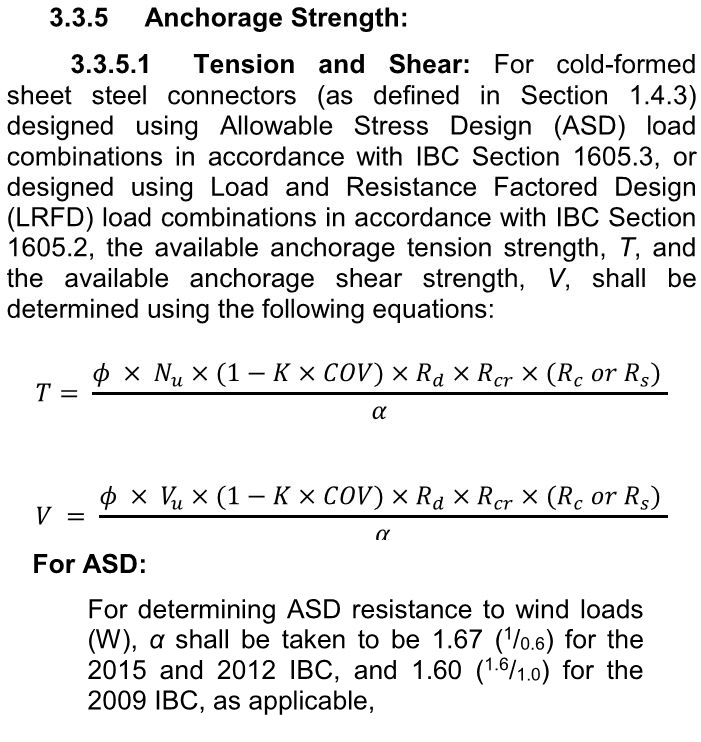
SDS Screw Connectors on SPF/HF Lumber:
We test most products on Douglas fir lumber and reduce those test loads based on specific gravity for other species, such as spruce-pine-fir (SPF) or hem-fir (HF). Simpson Strong-Tie previously used a conservative adjustment factor for SDS screw-style products based on older SPF testing. Because we had to re-evaluate loads to the new test standard, we took the opportunity to do additional testing on SPF/HF lumber to verify the D7147 adjustments. This resulted in increased loads for many SDS screw connectors on SPF/HF.
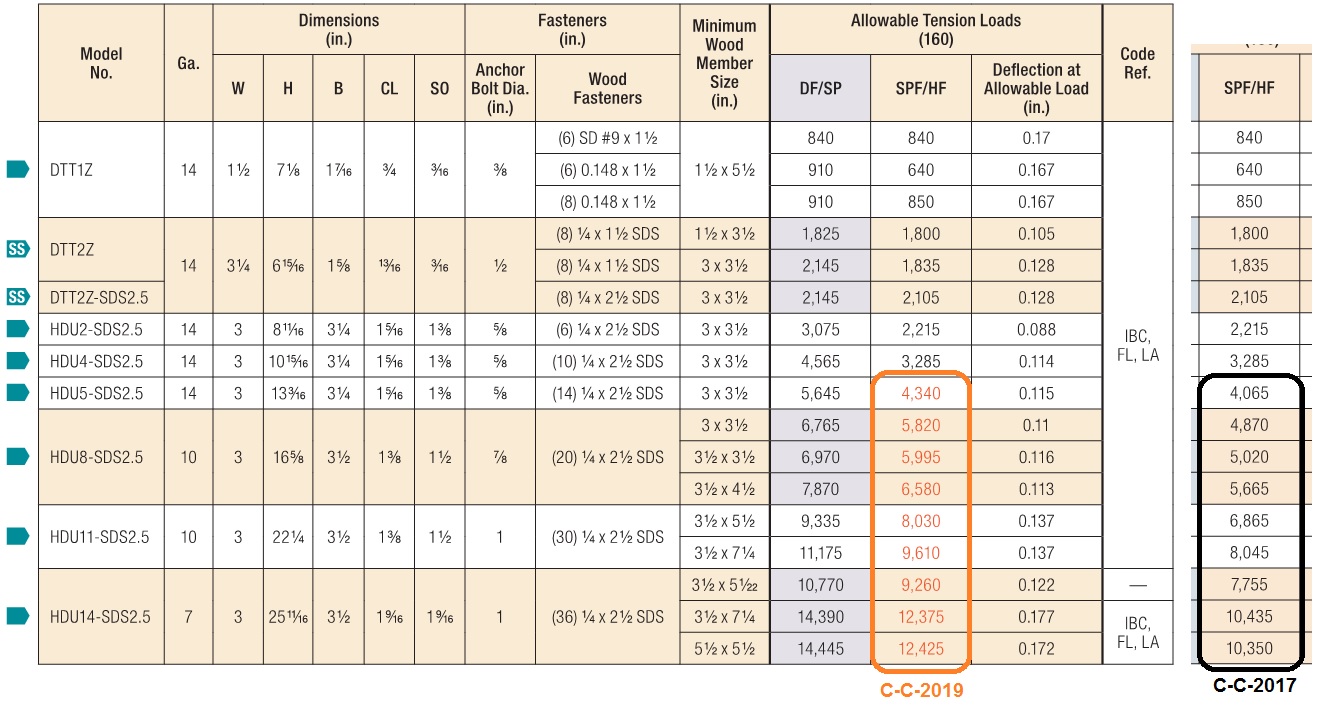
Post Bases:
Cast-in-place post bases, such as the PBS, CBS, CBSQ and CB did not have load changes aside from the 4% load reduction due to wind load factors discussed above. Our MPBZ moment post base connectors have additional options for reinforcing the foundation to achieve higher allowable moment loads.

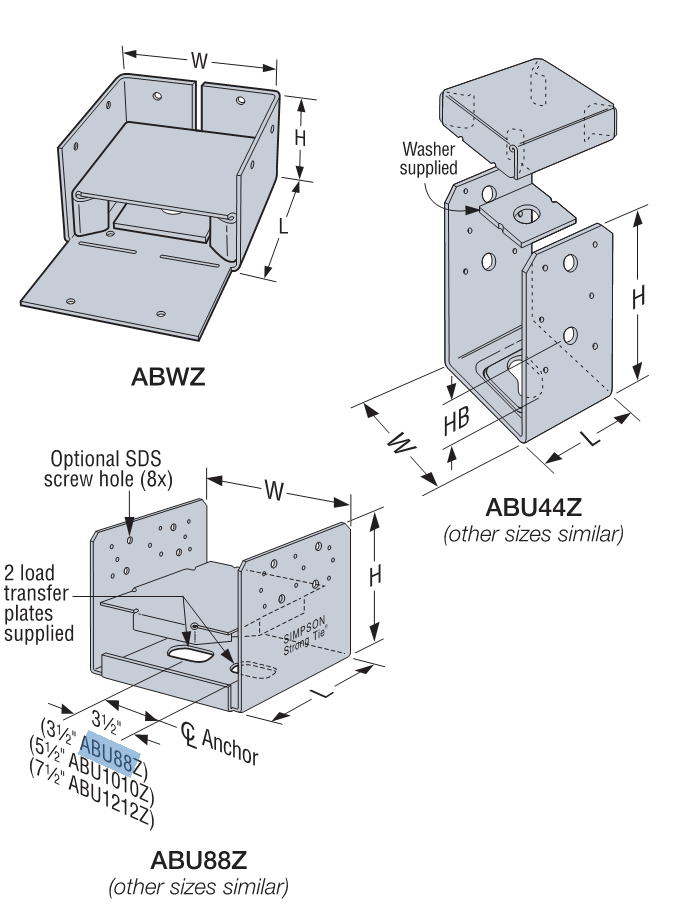
Adjustable standoff post base loads changed due to ASTM D7147 adjustments. The ABU44 uplift load decreased from 2,200 lb. to 1,900 lb. (~14%), while the remaining uplift loads stayed the same or even increased. Downloads for the standard 4×4, 4×6 and 6×6 post sizes did not change much. Some rough sawn and larger post sizes had download reductions. Load decreases greater than 5% are flagged in the table below.
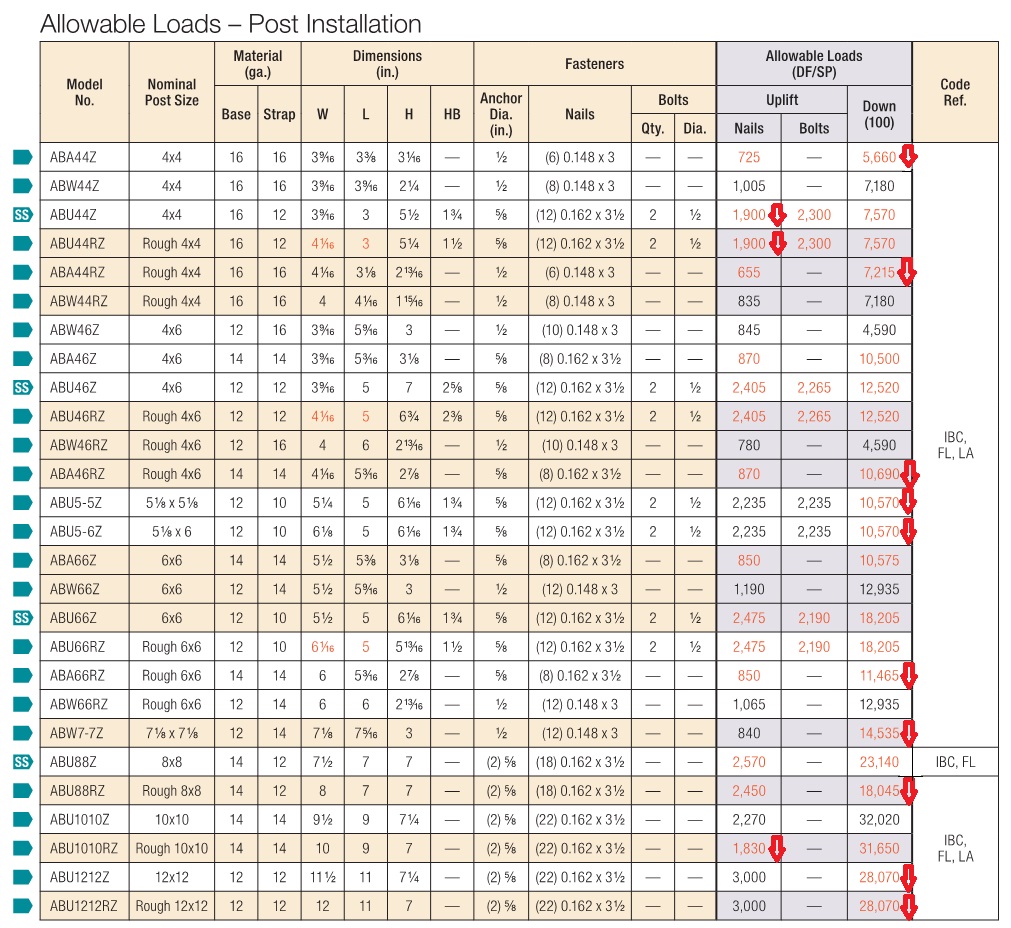
Post Caps:
The loads for nailed post caps did not change significantly. The PCZ/EPCZ series is a newer design, so its loads were already D7147 compliant while the AC/LCE/LPCZ post caps increased in load or stayed (mostly) the same. The LCE4 lateral load did decrease from 1,425 lb. to 1,350 lb. BC4 uplift loads reduced from 980 lb. to 605 lb. The remaining BC sizes had small changes in uplift and lateral loads.
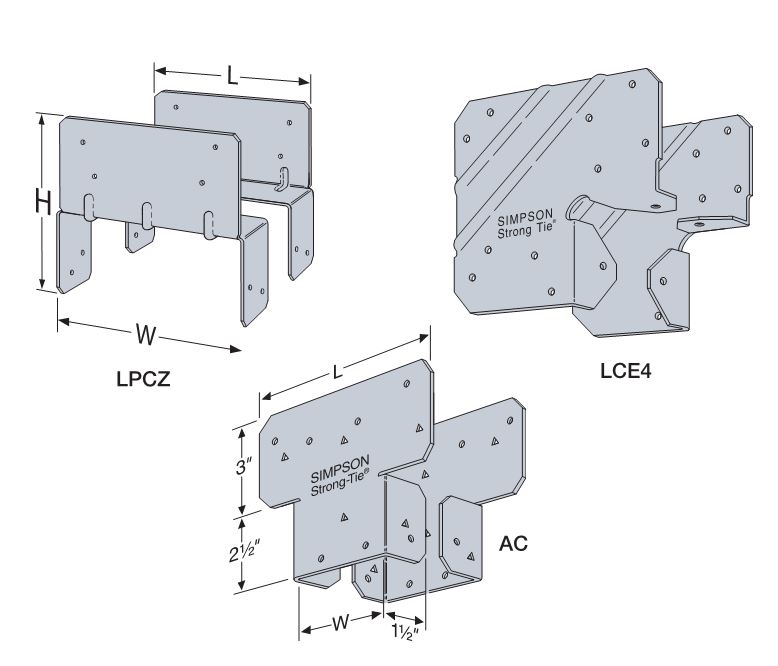
Face-Mount Joist Hangers:
Fastener calculations, not the test limit, govern the allowable download for many face-mount hangers. Therefore, even after reducing the test values, calculated loads still govern the design. Some of the higher-capacity hangers, e.g. HUS210, had uplift load changes on the order of 10%, which should be considered in future designs.
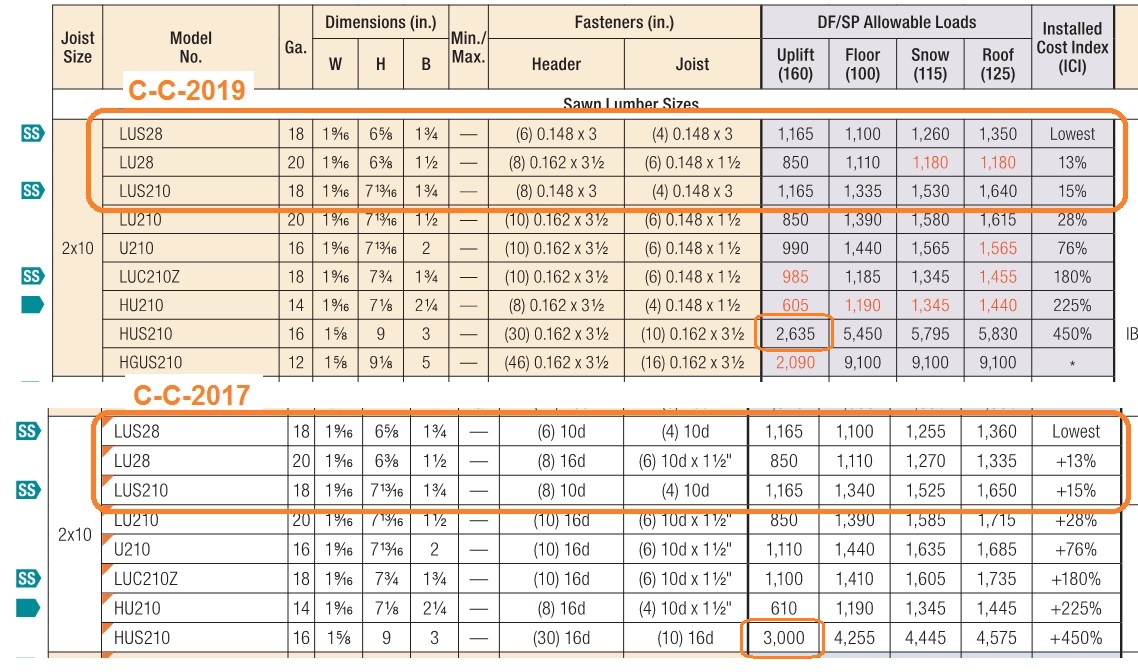
Top-Flange Joist Hangers:
In order to simplify our product offering for specifiers and distributors, we are discontinuing a number of older products and replacing them with newer products that meet the same requirements. We discuss this on p. 10 of the Wood Construction Connectors catalog. Rather than attempt to discuss the transition from the obsolete products to the new ones and the load changes, I will cover top-flange hangers in a future blog post.
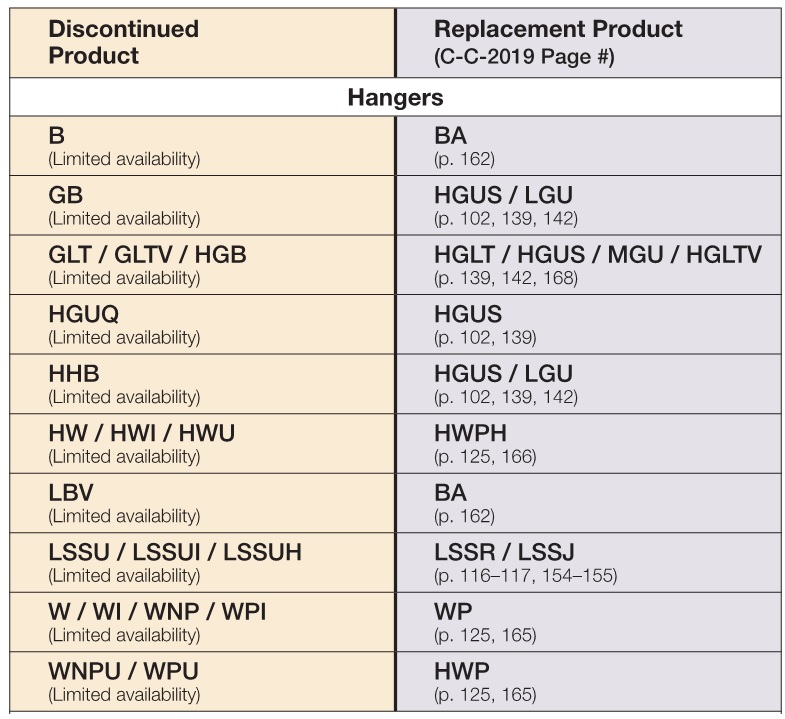
Hurricane Ties:
Hurricane tie allowable loads are affected by the both ASTM D7147 adjustments and changes in ICC-ES AC13 — Acceptance Criteria for Joist Hangers and Similar Devices. The boundary conditions of the test setup are critical in evaluating the performance of hurricane ties. Testing a connection between a 4×8 header and 4×8 joist, for example, will yield different results than testing a 2×8 rafter to a double 2×4 top plate. Since hurricane ties normally connect joists or rafters to wall top plates, Simpson Strong-Tie proposed changes to the acceptance criteria to require test setups to represent this end use.
The lateral (F1, F2) loads for hurricane ties changed very little with the new evaluation. For the most part, lateral loads are deflection limited and the changes do not impact deflection. Uplift loads for the H1 reduced from 585 lb. to 480 lb. (18%). The popular H10A reduced from 1,140 lb. to 1,040 lb. (9%) and the H2.5A reduced from 600 lb. to 565 lb. (6%).
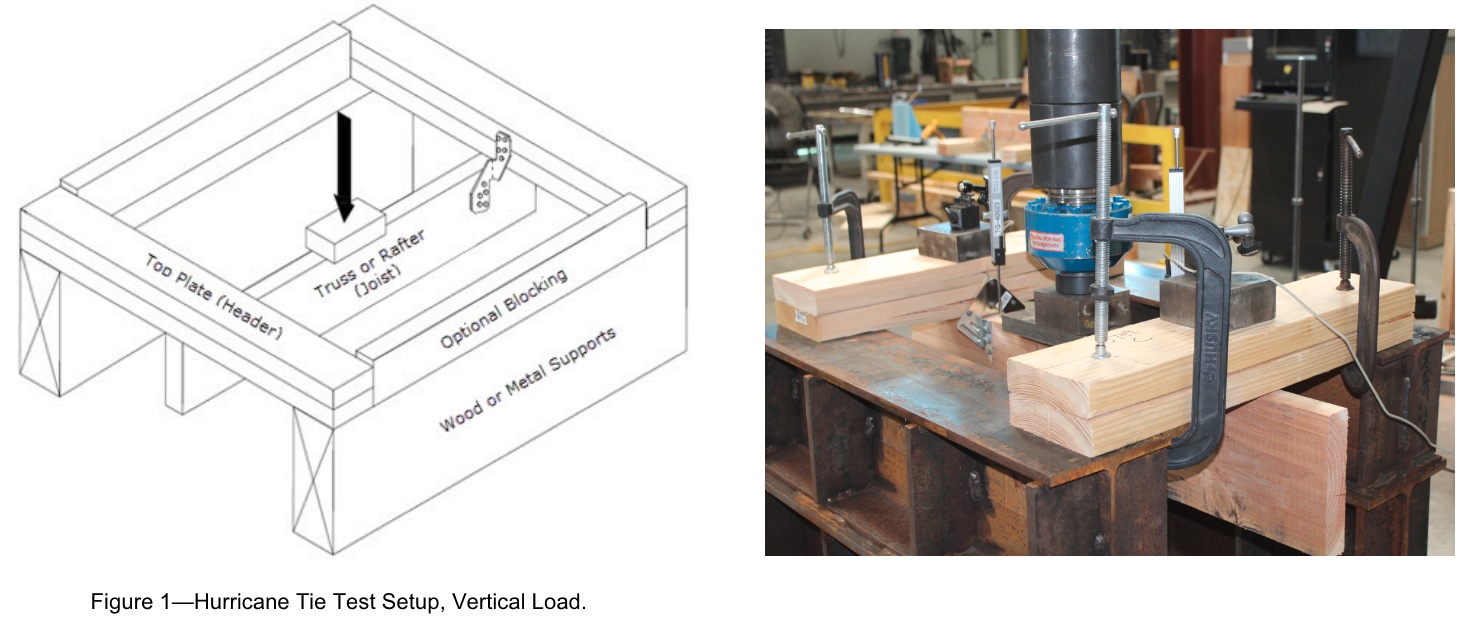
So which loads should be used in designs?
It is important to understand that our products have not changed; the building code requirements for how to evaluate them have changed. Due to the time required for software and building plans to incorporate these allowable load changes, Simpson Strong-Tie will continue to support and stand behind the use of allowable loads published in C-C-2017 until October 2019. For building departments enforcing the newer I-Codes®, we recommend continued acceptance of projects utilizing these loads through that same period. However, ultimate acceptance is up to the authority having jurisdiction.

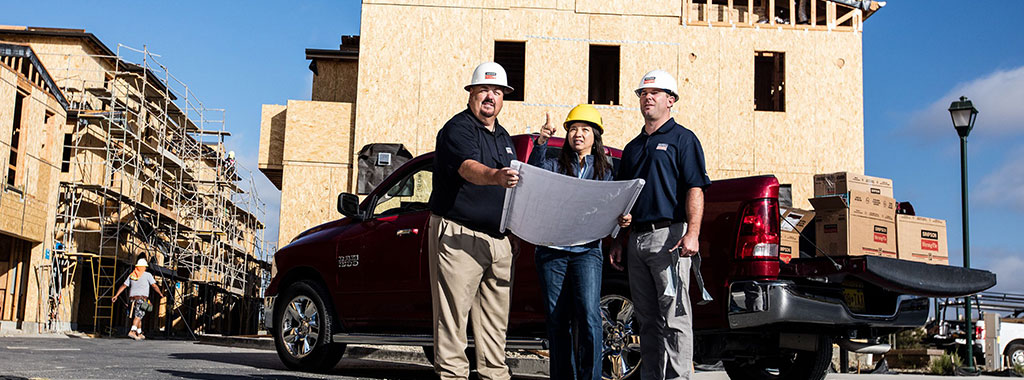


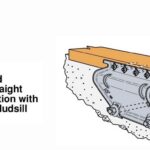
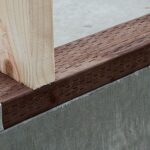
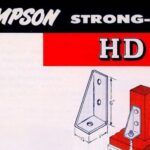
1 thought on “Code Report: Understanding Allowable Load Changes”